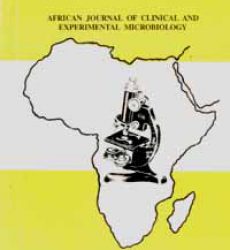economic impacts on production
*1Ukwueze, C. S., 2Kalu, E., 3Odirichukwu, E. O., 4Ikpegbu, E., and 5Luka, P. D.
1Department of Veterinary Medicine, Michael Okpara University of Agriculture, Umudike, Nigeria
2Department of Veterinary Public Health and Preventive Medicine, Michael Okpara University of Agriculture, Umudike, Nigeria
3Department of Veterinary Theriogenology, Michael Okpara University of Agriculture, Umudike, Nigeria
4Department of Veterinary Anatomy, Michael Okpara University of Agriculture, Umudike, Nigeria
5Biotechnology Division, National Veterinary Research Institute, Vom, Nigeria
*Correspondence to: ukwueze.chigozie@mouau.edu.ng; +2348030793359
Abstract:
Background: Helicobacter pylori, which is a causative agent of chronic gastritis, duodenal ulcer and gastric cancer, presently affects approximately one half of the world population. This study was conducted to assess the epidemiology and risk factors for acquisition of H. pylori among individuals with and without peptic ulcer symptoms in Owerri, Nigeria, in order to provide baseline data and create awareness for effective management and prevention of infection caused by this pathogen.
Methodology: A total of 384 participants, symptomatic and asymptomatic for peptic ulcer, were recruited from the three Local Government Areas (LGAs) of Owerri, Imo State, Nigeria. The symptomatic participants were randomly recruited among patients attending outpatient clinics with symptoms of peptic ulcer disease at the Federal Medical Center Owerri, general hospitals and primary healthcare centers across Owerri LGAs, while asymptomatic patients were recruited from the community. Information on socio-demographic characteristics of each participant and potential risk factors were collected with a pre-tested structured questionnaire. Blood samples were collected for detection of antibodies (IgG) using a one-step H. pylori test device while faecal samples were collected for detection of occult blood (from peptic ulceration) using faecal occult blood (FOB) test. Data were analyzed using SPSS version 25.0 and association of risk factors with H. pylori sero-prevalence was determined by the Chi-square or Fisher Exact test (with Odds ratio). P value < 0.05 was considered statistically significant.
Results: The sero-prevalence of H. pylori infection among the study participants was 72.4% (285/384) while the prevalence of ulcer by FOB test was 71.1% (273/384). A total of 78.4% (214/273) of those with ulcers were seropositive for H. pylori while 64.0% (71/111) of those without ulcers were sero-positive for H. pylori (p=0.0045). Factors significantly associated with high sero-prevalence of H. pylori were age groups 41-50 (100%), 21-30 (78.4%) and 31-40 (67.6%) years (X2=66.964, p<0.0001), illiteracy (OR=6.888, p<0.0001), unemployment (OR=2.427, p<0.0001), low social class status (X2=28.423, p=0.0003), drinking of unclean water (OR=5.702, p<0.0001), living in crowded rooms (OR=2.720, p<0.0001), eating food bought from food vendors (OR=3.563, p<0.0001), family history of ulcer (OR=12.623, p<0.0001), habits of eating raw vegetables and unwashed fruits (OR=6.272, p<0.0001), non-regular hand washing practices before meal (OR=2.666, p<0.0001) and presence of ulcer (OR=2.043, p=0.0045). However, smoking (OR=0.7581, p=0.2449) and gender (OR=0.6538, p=0.0796) were not significantly associated with sero-prevalence of H. pylori.
Conclusion: There is need for comprehensive strategy including public health education campaign to create awareness on H. pylori, improve personal hygiene and environmental sanitation, provision of safe drinking water by the government to the populace, and discourage indiscriminate and open defecation.
Keywords: Helicobacter pylori; peptic ulcer; serology; risk factors; association; Owerri
Received Jan 16, 2022; Revised Apr 18, 2022; Accepted Apr 19, 2022
Copyright 2022 AJCEM Open Access. This article is licensed and distributed under the terms of the Creative Commons Attrition 4.0 International License <a rel=”license” href=”http://creativecommons.org/licenses/by/4.0/“, which permits unrestricted use, distribution and reproduction in any medium, provided credit is given to the original author(s) and the source. Editor-in-Chief: Prof. S. S. Taiwo
Download full journal in PDF format below
Evolution of SARS-CoV-2 variants: a mini-review

